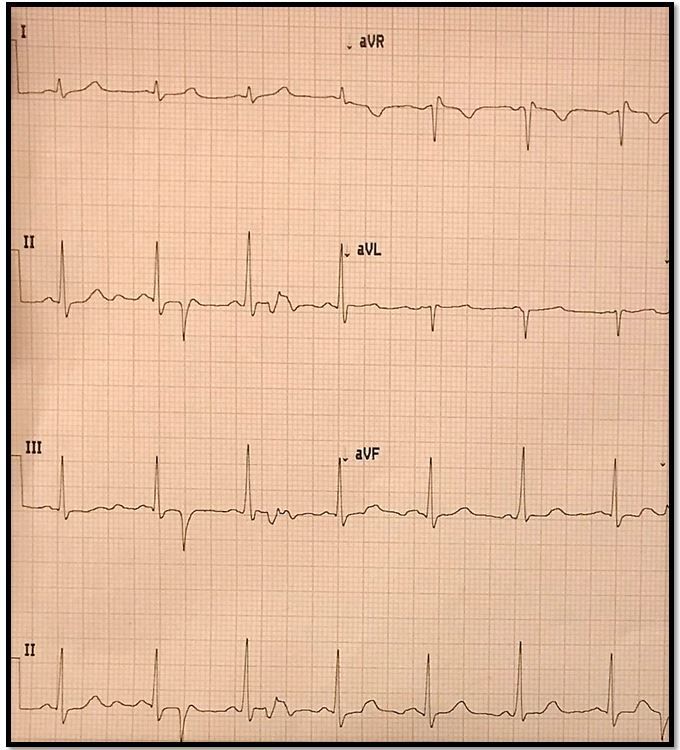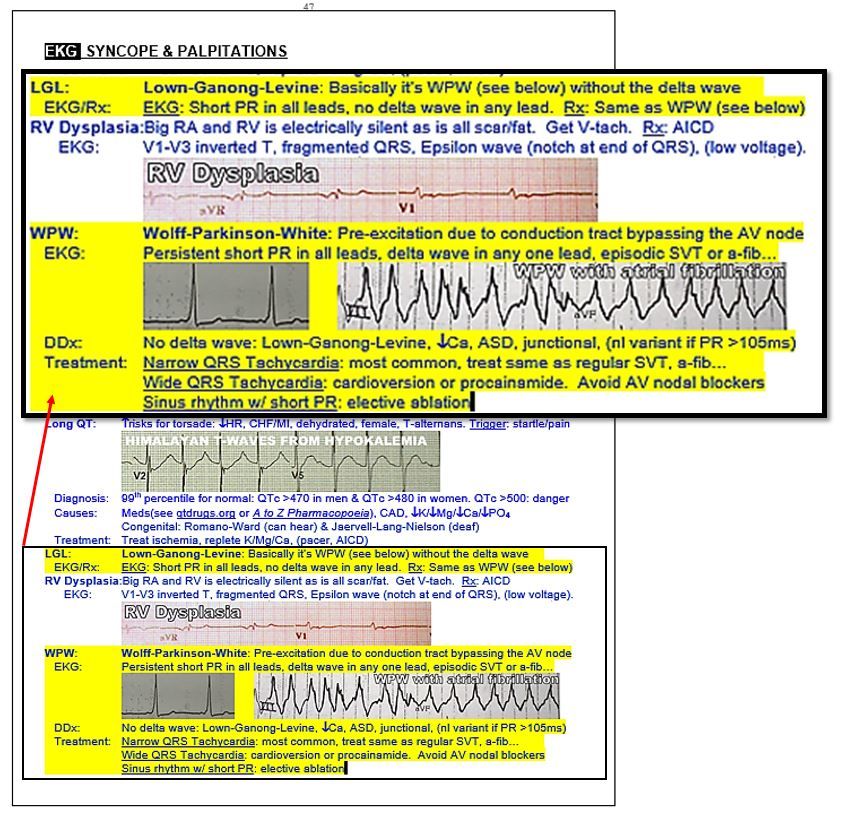- Clinical Technology
- Adult Immunization
- Hepatology
- Pediatric Immunization
- Screening
- Psychiatry
- Allergy
- Women's Health
- Cardiology
- Pediatrics
- Dermatology
- Endocrinology
- Pain Management
- Gastroenterology
- Infectious Disease
- Obesity Medicine
- Rheumatology
- Nephrology
- Neurology
- Pulmonology
Syncope on the Dance Floor
A 21-year-old woman is taken to the ED from a night club by ambulance for a possible panic attack. What’s your ECG read?
Figure 1. (Please click to enlarge)

Figure 2. (Please click to enlarge)

A 21-year-old woman is transported to the emergency department from a night club by ambulance for a possible panic attack. Medics state that she had been drinking and had just finished dancing and was walking off the floor when she suddenly experienced a rapid heartbeat and panic followed by a syncopal episode. A boy she had met that night caught her so there was no injury. The patient denies any chest pain, drug abuse or other complaints.
Examination
Vital signs were normal including heart rate, blood pressure and temperature.
Physical examination was normal as well, including pupils, thyroid palpation, heart rate, lungs, and neurologic exam.
Initial Concern(s)
- Anxiety
- PE
- Dysrhythmia
- Spiking of drink
Testing
- CBC, beta HCG, chemistry and toxicology results were all normal
- ECG (see results in Figure 1, above)
Questions
- What does the EKG show? (Figure 1; click to enlarge)
- What should you do next?
Answers
1. What does the ECG show? A short PR interval with a delta wave.
2. What should you do next? Request a cardiology consult.
Discussion
Young patients who present with anxiety or panic may have just that, but may rarely instead have dangerous conditions such as intermittent dysrhythmias or pulmonary embolism. The clinician should inquire about and focus on any symptoms that accompany the anxiety, especially any chest pain, palpitations, dyspnea, syncope or near syncope. In cases such as this one, where the patient has palpitations and syncope, but no chest pain or dyspnea, and is also at or near baseline in the ED, dysrhythmia is the diagnosis to exclude or rule in. This is best done with an ECG, cardiac monitoring, and a chemistry panel to rule out significant potassium or calcium disturbances.
This patient’s resting ECG showed no significant dysrhythmia, but did show a short PR interval, which can be a clue to an underlying bypass tract such as occurs in either Wolff-Parkinson-White or Lown-Ganong-Levine syndrome (see Figure 2 [above], click to enlarge and see highlighted area for more information on these conditions). Cardiology was consulted and saw the patient. Admission to the telemetry unit was recommended.
Conclusion
The patient actually had multiple runs of SVT overnight and the decision was therefore made to take her to the cath lab for ablation of her bypass tract.
Note: Excerpt on SYNCOPE AND PALPITATIONS from the Tarascon Emergency Department Quick Reference Guide
